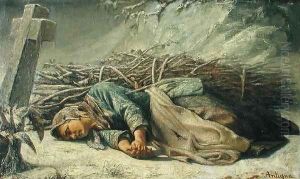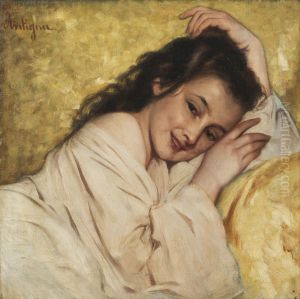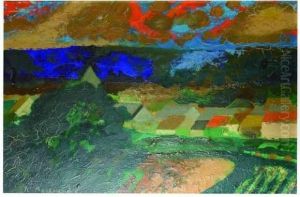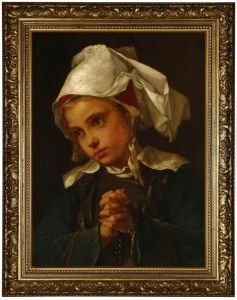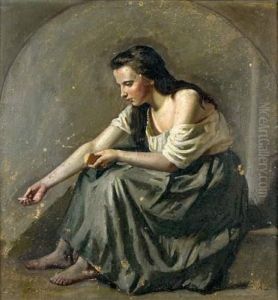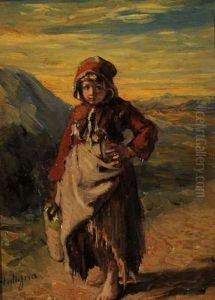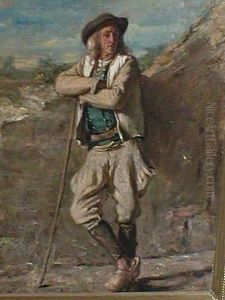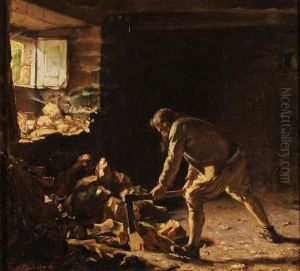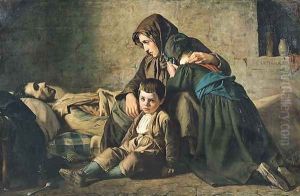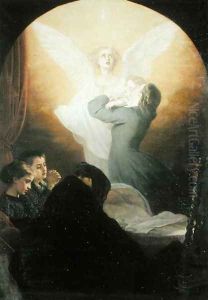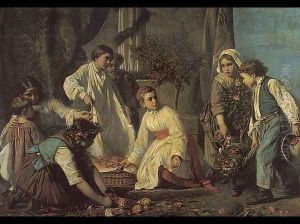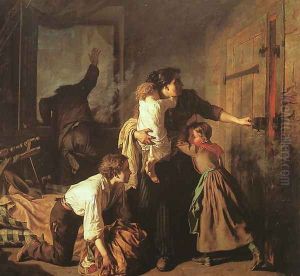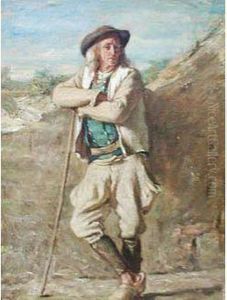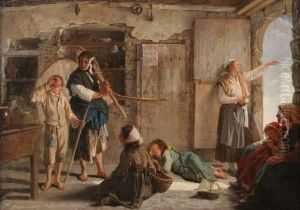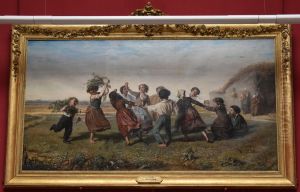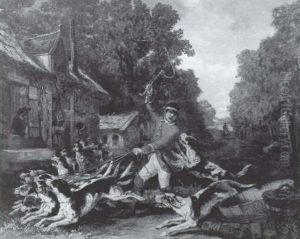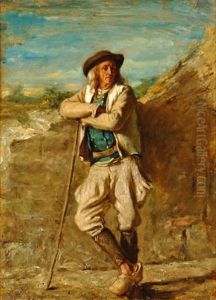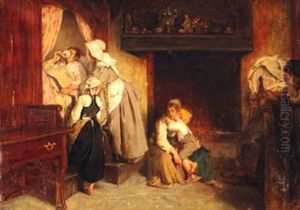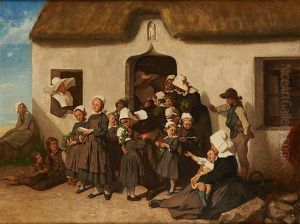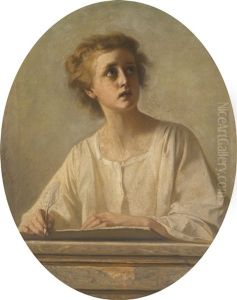Alexandre Antigna Paintings
Alexandre Antigna was a French painter born on March 7, 1817, in Orléans, France. He was a prominent figure in the 19th century French art scene, known for his powerful depictions of peasant life and the working class. Antigna was initially trained by his father, who was a modest painter, before moving to Paris to further his education.
In Paris, Antigna became a student of the influential French painter Paul Delaroche, and later, he worked in the studio of Jean-Auguste-Dominique Ingres. These experiences significantly shaped his artistic style, which combined elements of Romanticism and Realism. Antigna's early works were generally characterized by their attention to detail, dramatic lighting, and a certain emotional intensity.
The painter's breakthrough came with his work 'The Fire,' which was exhibited at the Salon of 1850-1851. This painting depicted a family escaping from a house fire, showcasing Antigna's ability to capture human emotion and tragedy. The piece was well received and marked a turning point in his career, establishing him as a serious artist within the Parisian art world.
Throughout the 1850s and 1860s, Antigna continued to paint scenes of everyday life, often highlighting the struggles and hardships faced by the lower classes. His approach was both sympathetic and unflinching, providing a social commentary on the era's societal issues. Antigna's work was part of the broader movement of Social Realism, which sought to draw attention to the conditions of the poor and the need for reform.
Despite his focus on the lives of the common people, Antigna also received commissions for religious paintings, and he exhibited his works regularly at the Paris Salon. His success allowed him to travel, including a trip to Spain, which influenced his use of color and light in later works.
Alexandre Antigna's health began to decline in the late 1860s, and he died on February 26, 1878, in Paris. His work left a lasting impact on the development of Realist painting in France, and he is remembered for his compassionate portrayal of human suffering and dignity. Antigna's paintings can be found in various museums across France, including the Musée d'Orsay in Paris.
